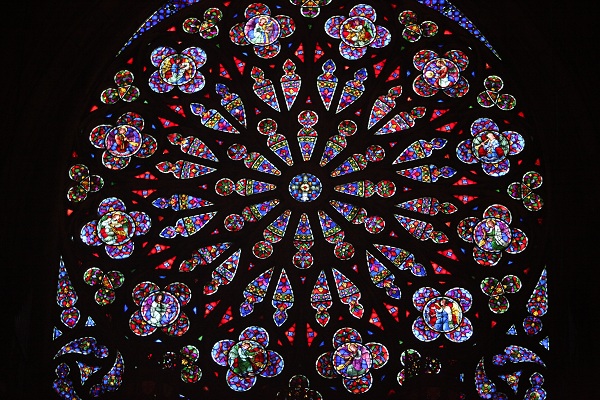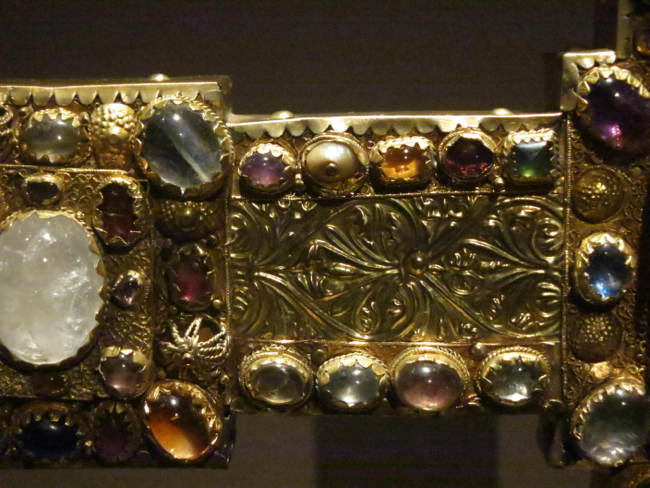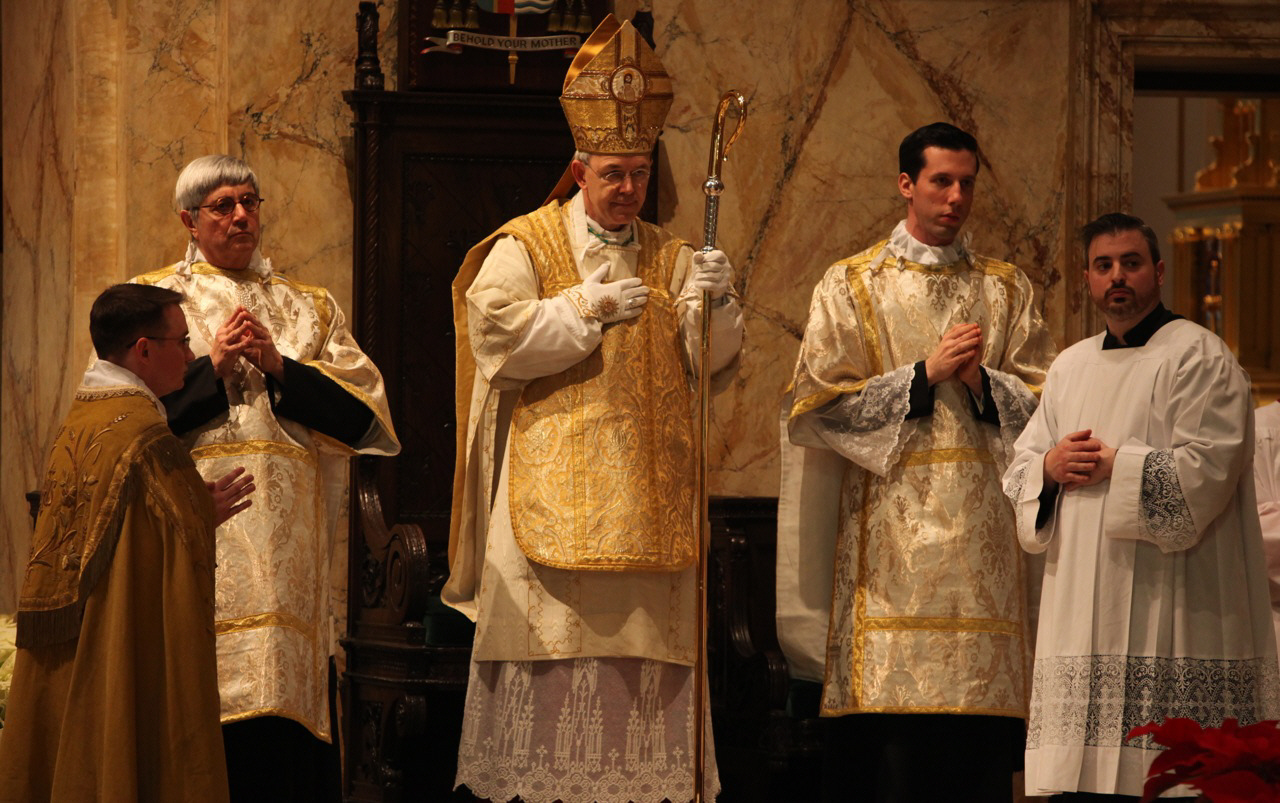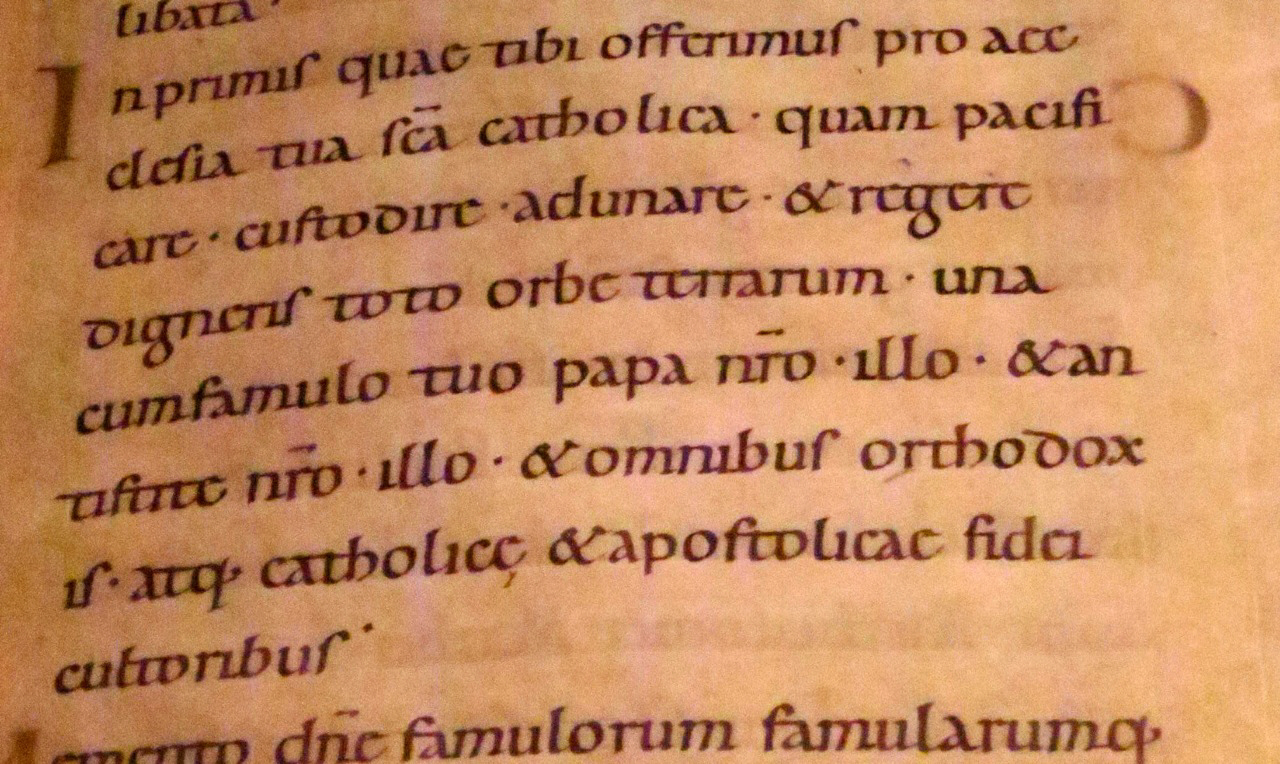From First Things.
Plus some of the craziest comments in history.
2
Dec
From First Things.
Plus some of the craziest comments in history.
2
Dec
From Father La Pastina of St. Mary Church, Greenwich
Dear Friends in Christ,
There are many different customs linked to the celebration of Advent. One of these customs is called a “Rorate Mass” a special Mass celebrated in honor of Our Lady on the Saturdays of Advent. The title comes from the first words of the entrance antiphon for the Mass which translated means: ” Drop down ye heavens from above” This reminds us that the Lord came down from heaven and became Man in the womb of the Virgin. What makes this Mass so unusual is that it is celebrated in the early morning by candlelight. The celebration should be timed so that the sun begins to rise by the time of the consecration of the Mass.
We will celebrate a Sung “Rorate Mass” in according to the Extraordinary Form of the Roman Rite (1962 Missal in Latin) on Saturday, Dec 13th at 6:30 in the morning. If you are an early riser please join us!
With prayers and good wishes,
Father La Pastina
Saint Mary Church
178 Greenwich Avenue
Greenwich, Connecticut 06830
1
Dec
A Solemn High Mass for the First Sunday in Advent was celebrated by the Augustinian Canons Regular of the New Jerusalem at the Priory of the Annunciation of the Blessed Virgin Mary in Charles Town, West Virginia. It was the last of a novena of masses for the health of Msgr. Ignacio Barreiro. Msgr. Barreiro is currently in residence at the headquarters of Human Life International in (relatively) nearby Front Royal, Virginia. While in the States he is also being treated for a serious illness. After the mass the congregation thanked Msgr. Barreiro for all his services for the Church and assured him of their continuing prayerful support.
1
Dec
Thanks to Jim Morlino of Navis Pictures, we have a short video of the recent Solemn Requiem Mass the Society co-sponsored on November 6 at St. Agnes Church, Manhattan. We also have a recording of some of the stunning music from the Mass here. The choir is the Schola Cantorum of St. Agnes under the direction of James Wetzel. Father Richard Cipolla’s homily can be found here.
We have photos of the Mass on our site here.
1
Dec
28
Nov
SAINT MARY CHURCH
178 Greenwich Avenue, Greenwich, Connecticut
Sunday, November 30 at 5:15 p.m.
Mass (Novus Ordo) and a talk on
“Cause of Our Joy”
Reverend Cyprian P. LaPastina
Pastor of Saint Mary Church
Monday, December 1 at 7:30 p.m.
Eucharistic Adoration and a talk on
“Mirror of Justice”
Reverend John A. Perricone
Professor of Philosophy,
Saint Francis College, Brooklyn, NY
Tuesday, December 2 at 7:30 p.m.
Eucharistic Adoration and a talk on
“Seat of Wisdom”
Reverend George W. Rutler
Pastor of Saint Michael Church, NY
Wednesday, December 3 at 7:30 p.m.
Eucharistic Adoration and a talk on
“Comfort of the Afflicted”
Reverend Michael Morris
Archivist for the Archdiocese of New York
Thursday, December 4 at 7:30 p.m.
Eucharistic Adoration and a talk on
“Mother Most Pure”
Reverend John Chrysostom, O.P.
Saint Vincent Ferrer Church, NY
Friday, December 5 at 7:30 p.m.
Eucharistic Adoration and a talk on
“Ark of the Covenant”
Reverend Gerald E. Murray
Pastor of the Church of the Holy Family, NY
Saturday, December 6 at 5:15 p.m.
Mass (Novus Ordo) and a talk on
“Refuge of Sinners”
Reverend Monsignor Javier Garcia
Prelature of Opus Dei
Sunday, December 7 at 5:15 p.m.
Mass (Novus Ordo) and a talk on
“Help of Christians”
Most Reverend John O’Hara
Auxiliary Bishop of the Archdiocese of New York
Monday, December 8 at 7:30 p.m.
Solemn Pontifical Mass for the Solemnity of the Immaculate Conception and a talk on
“The Immaculate Conception”
Most Reverend Frank J. Caggiano
Bishop of Bridgeport
(Sorry – the Mass is not in the Extraordinary Form)
|
PLEASE JOIN US! |
28
Nov
As “Making all Things New” continues its course, one decisive fact has emerged. The New York Times (of course) first highlighted it. It has been long known to every Catholic here remotely in touch with reality. Now Cardinal Dolan restates it in his inimitable way:
However, a perceptive journalist laser-beamed the real shortage: “Seems like you have a shortage of people!” Bingo!
She was right! Simply put, our people aren’t coming anymore. True, some of the shortage in older parishes is due to the fact that our folks have moved. The people that do come are as committed as ever. But, we still have to admit our numbers of committed, consistent churchgoers are down…. Still, though, we have to admit, our people aren’t coming anymore. On any given Sunday, the stats tell us that only somewhere between 15 and 28% of our folks show up!1)
That indeed is the problem. If only 15% of the Catholics regularly practice their religion, the financial resources contributed to the Archdiocese will shrink: everything from the Cardinal’s Appeal to the Sunday collection to two dollars in the box for a votive light. The number of vocations to the priesthood will correspondingly suffer. As time goes on, parishes will see fewer weddings, baptisms and funerals as well. And this decline has been going on for decades.
The Cardinal now concedes that the New York Archdiocese, taken as whole, has NOT suffered a crisis of “demographic change” – at least in the normal sense of that term. New York is no Buffalo or even Boston. The number of Catholics in the Archdiocese has even risen over the years. New York City remains the economic center of the country, even of the world. The crisis of the Archdiocese is not the result of impersonal forces over which the clergy could not be expected to have any control. Indeed, the Cardinal asks:
So, now our sacred responsibility is to win our people back! That’s what Pope Saint John Paul II called the new evangelization! That means asking why they no longer come, how we can attract them back, and what we’ve done wrong, a strategy Pope Francis is encouraging.
As one savvy priest remarked, “Let’s stop closing parishes and start filling them up!” 1)
Regrettably, this candid diagnosis does not appear to raise any questions in the Cardinal’s mind concerning the current policies of the Archdiocese. So, the Cardinal explains that 220 Parochial schools were reduced to 160 because 70% of Catholic parents “chose not to send their children to our excellent schools.” Were these parents asked their views of the “excellent” schools? A parish scheduled to be closed under Making All Things New (probably Our Lady of Peace) had a petition signed by 3,000 supporting keeping the parish open, yet only 500 people attended mass each Sunday. If 1,500 had attended, according to the Cardinal, the decision to close “would not have been foreseen“ (=taken?). Thus, the decision to close appears as a punishment for the failure of the parishioners to participate. And, at the end of the day, the Cardinal offers once again only the existing, materialistic solution of downsizing:
“fewer, but now stronger, fuller, more vibrant parishes, better served by more available priests, in new communities no longer straitjacketed by demands of maintenance of huge, half-empty, in-need-of-repairs buildings….” 2)
For a second view of the situation, we have Father George Rutler, Pastor of two churches originally scheduled for closure that have survived the cut (for now). He identifies much more frankly and precisely the nature of the problems:
I think there’s a great deal of dishonesty and denial on the part of some people who engaged in the fantasy that we were entering a new springtime of the faith. The aggiornamento of Vatican II was supposed to bring in tons more people; it did just the opposite. So long as people refuse to admit there were mistakes made a generation ago — in catechesis, liturgy, addressing the real problems of secularism — they’re never going to make any real reform.
The primary fact is that most Catholics aren’t practicing the faith. Mass attendance in New York is about 12%. You’ve had about a 50% drop since the Second Vatican Council. Nobody will address that. They’ll acknowledge the fact, but they will not address the fact that there were some serious mistakes made in the last generation.
And solutions?
The first thing is to be realistic, to address the real problems in our society, secularity, instead of trying to be everything to everyone. It’s a great danger just to want to be friendly and liked instead of challenging in a prophetic way the errors of society and caving into them. St. Paul said to Timothy, “Do not be a man-pleaser.” This doesn’t mean going around and hitting people over the heads with bibles, but it does mean being Catholic, right across the board…. We’ve had a secularization of religious life. Women’s religious orders are collapsing, have collapsed. Nothing was done a generation ago to discipline the orders, and to truly reform them. The ones that are growing are the ones who are faithful to their founders’ charisms.
And a primary evangelical tool of the Church is the liturgy, and wherever the liturgy is banal, you will not have vocations. In many places it’s not a problem of heresy, it’s just a matter of sloth. People are just stuck in the 1970s. Young people don’t want to go to a church where there’s a septuagenarian playing very bad Jesuit hymns from the 1960s. 3)
I hesitate to criticize a priest who has made such unique contributions to Catholic life here over the last decades, but I cannot follow Fr. Rutler’s further observations:
I think there’s a real problem of reaction from evangelization, a real problem of nostalgia rather than tradition on the part of many people as far as the Extraordinary Form is concerned…
The priest facing the people (in the ordinary Form – SC) becomes a kind of circular community lacking in transcendence. But a lot of people who embrace the Extraordinary Form run that risk too. They become ghettoized. It’s rather significant that in so many cases — I can’t cite numbers — but usually it’s been my experience that where the Extraordinary Form is, usually you have a static group of people, and you don’t have outreach for bringing others in.
So just using the Extraordinary Form is not the solution.4)
I would agree that JUST using the Extraordinary Form is not the solution. But clearly, given the average age of the current EF congregations, how can there be nowadays any question of “nostalgia?” Furthermore, it does seem a little peculiar for Fr. Rutler to talk about a lack of “outreach for bringing others in” when a Traditionalist community under his administration (Holy Innocents) just concluded a highly successful world-wide “outreach” campaign. A community, I should add, that has only been in existence since the end of 2007 as a predominately lay apostolate.
So the critical fact of Catholicism in this region – that only some 15% of Catholics regularly practice their faith – is finally being admitted. Both our writers agree that some questions may legitimately be asked of the current practices of the Archdiocese. We certainly welcome that! And Fr. Rutler identifies that a critical review of the policies and program of “Vatican II” must play a role in any real revival of Catholicism. Yet even he hesitates at the “Traditionalist” component of the solution. It seems it will take more patient work – or “outreach,” to use that term of Catholicspeak – on the part of Traditionalists before their indispensable contribution to the recovery can be more widely acknowledged even by those who should be our allies.
1) Cardinal Timothy Dolan, The Best Is Yet to Come (November 11, 2014) http://cardinaldolan.org/index.php/the-best-is-yet-to-come/
2) http://cardinaldolan.org/index.php/the-best-is-yet-to-come/
3) Burger, John; Beyond the New York Church Closings, Alateia (November 3, 2014) http://www.aleteia.org/en/religion/article/behind-the-new-york-church-closings-5852002303082496?page=1
4) http://www.aleteia.org/en/religion/article/behind-the-new-york-church-closings-5852002303082496?page=2
25
Nov
Report: Fr.Leonard Villa assigned there!
Confirmed!
24
Nov
We told you it was a little premature to break out the champagne. We have now have a report that St Thomas More parish on the Upper East Side will be closed and its parishioners “invited” to join St Ignatius Loyola and its Jesuits:
“Gasps were heard and tears were seen when Pastor Kevin Madigan informed parishioners this past Sunday at each Mass that their church was likely to close next August. It was a stunning blow for the vibrant church community that had received numerous assurances that St. Thomas More Catholic Church was safe.
St. Thomas More serves a highly affluent family community on Manhattan’s Upper East Side with regular Masses, as well as with many informative and noteworthy events. The church is free of debt and its operations are financially sound.”
From the Huffington Post.
In a way it is poetic justice, for St. Thomas More was established to offer an alternative to Jesuit dominance of the wealthiest neighborhood of New York City. I doubt anyone could have imagined that such a parish would be closed. but it continues a emerging pattern of the liquidation of smaller parishes (Our Lady of Peace, St. Elizabeth of Hungary have been announced; others have been rumored) in some quite well-to-do areas of the city. Areas with correspondingly high real estate values….
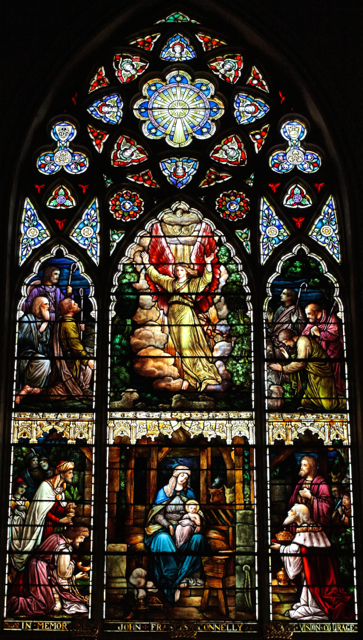
(above) The main window of the apse of St. Thomas More church.
17
Nov
From First Things. Wherein we hear where the founder has gone… and some of the costs of the enterprise.
